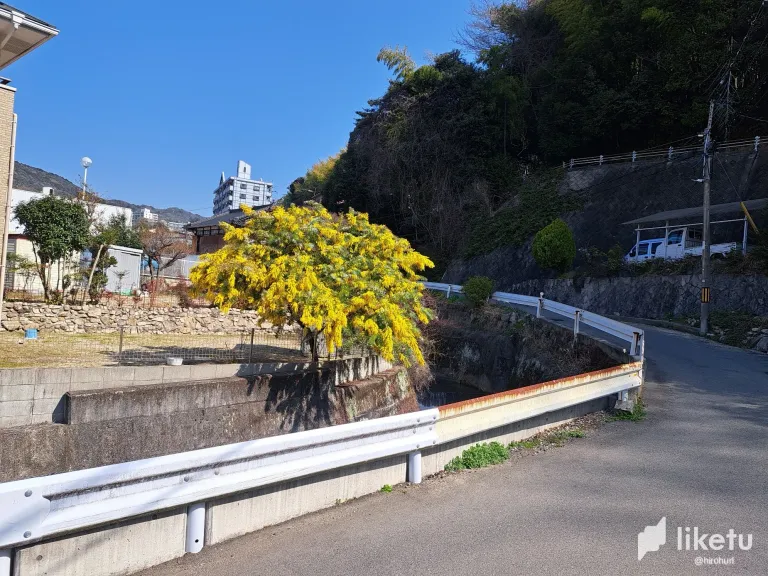


It was the loveliest morning of spring so far and I hopped off the tram early enough to walk the narrow back road up to the community centre rather than catch the bus up the main (but still not very wide) road.
I was heading to my twice-a-month Saturday morning English conversation class.
On my way up I saw magnolia and Japanese apricot in blossom, the magnolia just at that point where it is in full bloom without being overblown; but the one tree that really caught the eye was the lonesome mimosa that stands on the edge of a stream (or perhaps I should say, a concrete ditch), overlooking a bend in the road, disporting itself in the magnificence of its blossom.
Matsuo Basho: The Narrow Road to Oku
Four hundred years ago the poet Matsuo Basho walked the narrow roads of northern Japan, far away from Hiroshima, and he too happened to come across a mimosa tree, which he mentions in one of his haiku:
象潟や 雨に西施が ねぶの花
Kisakata ya / ame ni Seishi ga / nebu no hana
Kisakata is a town in Akita Prefecture that Basho visited.
According to Donald Keene, Seishi was
"A celebrated Chinese beauty (Hsi Shih), known especially for her mournful expression."
"Nebu" - A Japanese Pun
If you ask any Japanese person today how to translate "mimosa" into Japanese, they will most likely say "mimoza" - ミモザ - but the old word that Basho uses is "nebu."
"Nebu" also means "to sleep" and Donald Keene points out that Basho is punning: Seishi is a sleeping flower, and the flower is the mimosa blossom drooping in the rain. Seishi, then, is a symbol for the somewhat mournful beauty of rain falling on mimosa. The sleeping beauty (Seishi) suggests a connection between the natural world and the human experience, particularly in terms of rest and renewal.
Here is Donald Keene's translation:
Kisakata― / Seishi sleeping in the rain, / Wet mimosa blossoms.
Source: The Narrow Road to Oku, Matsuo Basho, translated by Donald Keene, illustrated by Miyata Masayuki, Kodansha 1996.
For the best experience view this post on Liketu


 -
- 